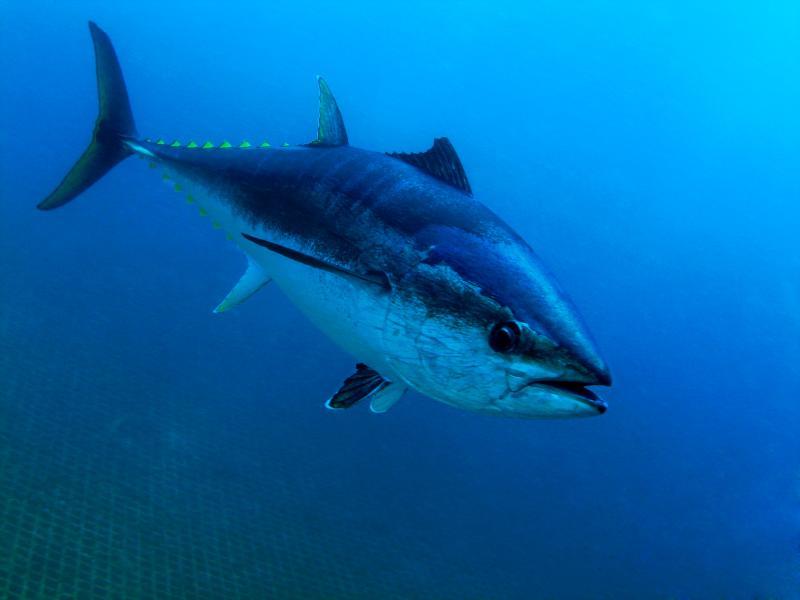
International collaboration improves understanding of tuna populations
by NOAA Fisheries 17 Dec 2023 19:08 UTC

Atlantic bluefin tuna © NOAA Fisheries
Researchers found that Atlantic bluefin tuna from the three known spawning grounds are more genetically interconnected than previously thought.
A team of researchers from eight countries, including three NOAA Fisheries scientists, recently published findings in the journal Molecular Ecology. The findings show Atlantic bluefin tuna populations are more interconnected than previously understood. The study was led by Spain-based AZTI Technology Centre, which also described the results in a press release.
International collaboration is particularly vital to studying and conserving highly migratory species, including bluefin tuna. They migrate long distances and cross international boundaries.
"This study demonstrates how essential international collaboration is for bluefin tuna," explained John Walter, deputy director for science and council services at NOAA's Southeast Fisheries Science Center. "We see this as a critical step toward developing a pan-Atlantic approach to provide management advice that harnesses the increasing power of advanced genomics."
Finding Genetic Connections
The study used advanced genetic analyses to further scientists' understanding of the Atlantic bluefin tuna genome. It found connections among individuals from the three known bluefin tuna spawning grounds:
- Gulf of Mexico
- Slope Sea
- Mediterranean Sea
This is the first genetic study to include the recently identified third spawning ground for this species, the Slope Sea off of the northeast United States Continental Shelf. Previously, scientists thought there were eastern and western populations, spawning respectively in the Mediterranean Sea and the Gulf of Mexico.
Researchers found genetic evidence that Atlantic bluefin tuna in both the Slope Sea and Gulf of Mexico were related to the Mediterranean population. These findings add to growing evidence that Atlantic bluefin tuna populations in the different spawning grounds are more interconnected than previously understood.
Despite the connectivity, the researchers also found significant genetic differences among the fish from the three spawning grounds. The Gulf of Mexico and Slope Sea fish are more similar to each other than they are to Mediterranean Sea fish.
"These findings show that what were thought to be two reproductively-isolated populations (tuna that spawn in the Mediterranean and the Gulf of Mexico, respectively) are not only demographically connected, but they also mix in the northeastern United States spawning ground, although they tend to return to the area where they were born," explained lead author Natalia Díaz-Arce, an AZTI researcher.
This could have implications for the genetic diversity and conservation of the western population. Future scientific research should consider these findings to address potential population-level impacts in the species.
Value of Bluefin Tuna
Bluefin tuna are some of the most valuable fish in the Atlantic. In 2017 alone, U.S. commercial fishermen generated an estimated $9.6 million in revenue from harvesting bluefin. That year, fishermen earned an estimated $6.45 for every pound of bluefin they harvested—more than any other Atlantic tuna.
Atlantic bluefin tuna are also a coveted recreational species that support millions of dollars in economic value each year. A 2015 study conducted by the Virginia Institute of Marine Sciences analyzed recreational anglers' willingness to pay for bluefin tuna trips. The results showed that the private boat bluefin tuna fishery had an estimated value of $14 million that year.
NOAA Fisheries scientists lead stock assessments at the International Commission for Conservation of Atlantic Tunas. They facilitated recent adoption of a management procedure for Atlantic bluefin tuna that explicitly considers stock mixing as well as spawning in the Slope Sea.